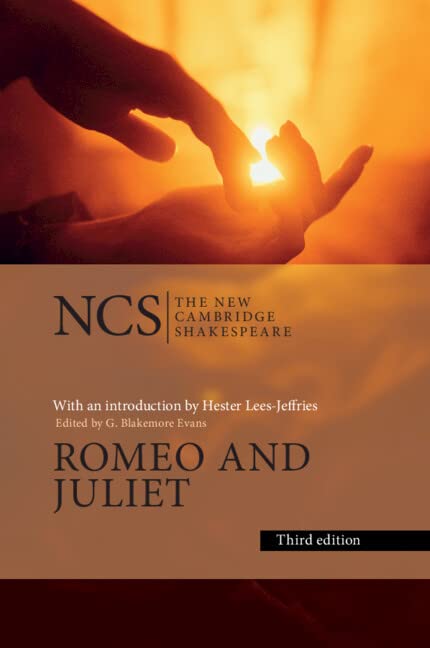Dr Hester Lees-Jeffries, St Catharine's
hmml2@cam.ac.uk

Biographical Information
I'm a University Associate Professor and a Fellow of St Catharine's College, where I'm one of the directors of studies in English. I completed my BA and MA (Hons.) at the University of Canterbury, Christchurch, New Zealand, before coming to Cambridge as a Commonwealth Scholar to begin my PhD in 1999. From 2003-6 I was a Research Fellow at Magdalene College. I lecture and supervise for the Shakespeare and Renaissance papers in Part I and the Material Renaissance and Early Modern Drama papers at Part II, and frequently teach the Renaissance textual studies component of the MPhil. I coordinate the programme of exhibitions for the Centre for Material Texts.
Research Interests
I work on Shakespeare and early modern literature in general, with a particular interest in performance and visual and material culture, and in interdisciplinary approaches. My latest monograph is Textile Shakespeare, which will be published by Oxford University Press: it's about silk, embroidery, linen, gloves and shoes (and leather and wool), folds, tailors and cutting, sewing scenes, and cloaks, cloaking, and black cloth. I'm currently writing Shakespeare's Histories: A Very Short Introduction (OUP). I prepared The Shakespearean Forest, by the late Anne Barton, for publication by Cambridge University Press (2017). I'm a member of the Advisory Board for Cambridge Shakespeare Editions and of the editorial board of Shakespeare Survey; since 2024, I've also been the London reviewer for Shakespeare Survey, writing an annual round-up of professional Shakespeare productions in London. My current long-term project is a new edition of Shakespeare's Two Gentlemen of Verona (the one with a dog) for the Arden 4th Series.
In 2018 I wrote about Romeo and Juliet every day; you can see the whole thing here. In 2019-20 I wrote another #SlowShakespeare blog about The Tempest, called #StormTossed, here, and in 2020-21 I wrote #KingedUnkinged about Richard II. My 2021-2 #SlowShakespeare blog was #DaggerDrawn, about Macbeth and in 2022-3 it was #BurningBarge, slow-reading Antony and Cleopatra. In 2024 I read The Two Gentlemen of Verona, slowly; #2Dudes1Dog... And my new #SlowShakespeare blog is #InkyCloak reading Hamlet, every day, slowly... (All these last three are on the same page, but should be searchable.) Follow @starcrossed2018 or @starcrossed2018.bsky.social for new posts and other (mostly) Shakespeare-related things. I read and respond to comments on all the previous blogs and value hearing from teachers in particular!
Areas of Graduate Supervision
Shakespeare and early modern literature, especially (but far from exclusively) drama; visual and material culture, and performance.
Selected Publications
Monographs
Textile Shakespeare (Oxford, in press)
Shakespeare and Memory (Oxford Shakespeare Topics) (Oxford, 2013)
England’s Helicon: fountains in early modern literature and culture (Oxford, 2007)
Editions
Romeo and Juliet (New Cambridge Shakespeare) [introduction] (Cambridge, 2023)
Reviews
'Shakespeare performances in England, 2024: London productions', Shakespeare Survey 78 (2025) (forthcoming)
Journal Articles and Chapters in Books
'Hamlet's garbage', Notes and Queries (forthcoming)
'Body language: making love in lyric in Romeo and Juliet', Review of English Studies 74 (2023), 237-53 Body Language
'Pepys, silk, and The Triumphant Weaver (1682)', in Word, Image, Music: Essays on the Treasures of the Pepys Library, Cambridge. In Honour of Richard Luckett, ed. M.E.J. Hughes (London: Scala, 2023) (forthcoming)
'Shakespeare, in folds', Inscription 3 (2022), 25-9 Shakespeare, in folds
'Nostalgia', in Shakespeare and Emotion, ed. Katharine Craik (Cambridge, 2020), 302-316
'"Thou hast made this bed thine altar": John Donne's sheets', in Domestic Devotions in the Early Modern World, ed. Marco Faini, Alessia Meneghin (Leiden, 2018), 269-287
'Mantled in blood: Shakespeare's bloodstains and early modern textile culture', in Blood Matters, ed. Bonnie Lander Johnson and Eleanor Decamp (Philadelphia, 2018), 61-78
‘“My mother’s maids, when they did sew and spin”: staging sewing, telling tales’, Shakespeare Survey 70 (2017), 171-9
'Tragedy and the Satiric Voice', in The Oxford Handbook of Shakespearean Tragedy, ed. Michael Neill and David Schalkwyk (Oxford, 2016)
'What's Hecuba to him? Absence, silence, and lament in Troilus and Cressida and Troilus and Criseyde', in Love, history and emotion in Chaucer and Shakespeare, ed. Elisabeth Kempf, Russell West-Pavlov, Andrew James Johnston (Manchester, 2016)
'Greater Shakespeare: working, playing, and making with Shakespeare', Shakespeare Survey 66 (2013), 188-97
‘No country for old men? Ciceronian friendship and old age in Shakespeare’s second tetralogy and beyond’, Review of English Studies 62 (2011), 716-37
‘Pictures, places and spaces: Sidney, Wroth, Wilton House and the Songe de Poliphile’, in Renaissance Paratexts, ed. Helen Smith, Louise Wilson (Cambridge, 2010), 185-203
‘Lear and Shakespeare as Godfathers’, Notes and Queries 57 (September 2010)
‘Literary gardens from More to Marvell’ in A New Companion to English Renaissance Literature and Culture, ed. Michael Hattaway (Oxford, 2010), 379-95
‘A learned dialogue of BERNARD PALESSY, Concerning waters and fountaines, both naturall and artificiall: Translated Owt of French into English, by Thomas Watson’, Studies in the History of Gardens and Designed Landscapes 30 (2010), 1-56
‘Thomas Lodge’s translation of Seneca: a possible Shakespearean echo’, Notes and Queries 56 (March 2009), 81-4
‘A subtle point: sleeves, tents, and "Ariachne’s broken woof" (again)’, Shakespeare Survey 62 (2009), 92-103
‘Location as metaphor: Veritas temporis filia (1559) and its afterlife’. In The Progresses, Pageants and Entertainments of Queen Elizabeth I, ed. Jayne Archer, Elizabeth Goldring, Sarah Knight (Oxford, 2007), 65-85
‘Sacred and profane love: four fountains in the Hypnerotomachia (1499) and the Roman de la Rose’. Word & Image 22.1 (2006), 1-13
‘Sidney’s Zelmane and the Songe de Poliphile’. Sidney Journal 21 (2003), 67-75
‘From the fountain to the well: Redcrosse learns to read’. Studies in Philology 100 (2003), 135-176
‘A new allusion by Jonson to Spenser and Essex?’ Notes and Queries 50 (March 2003), 63-65

